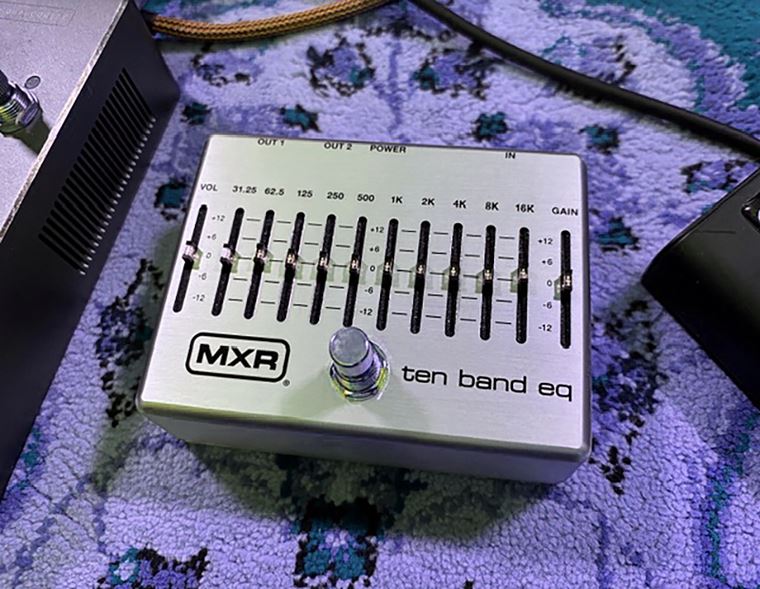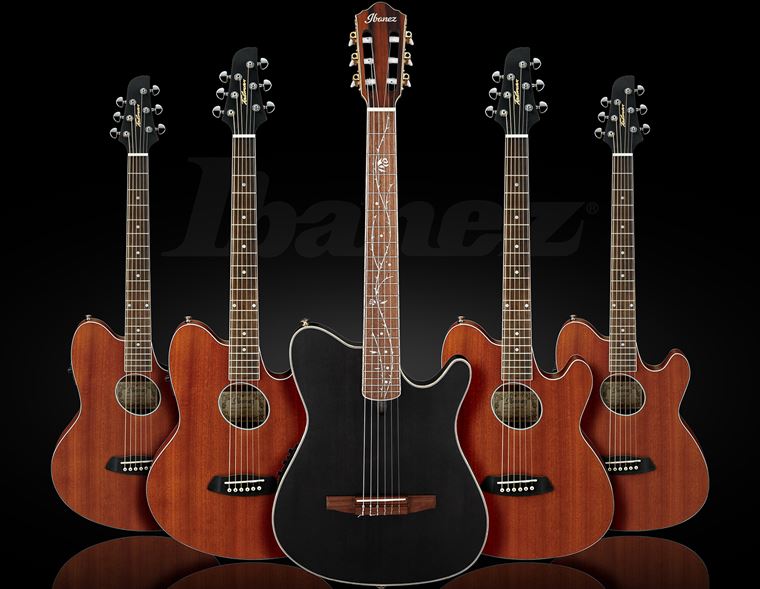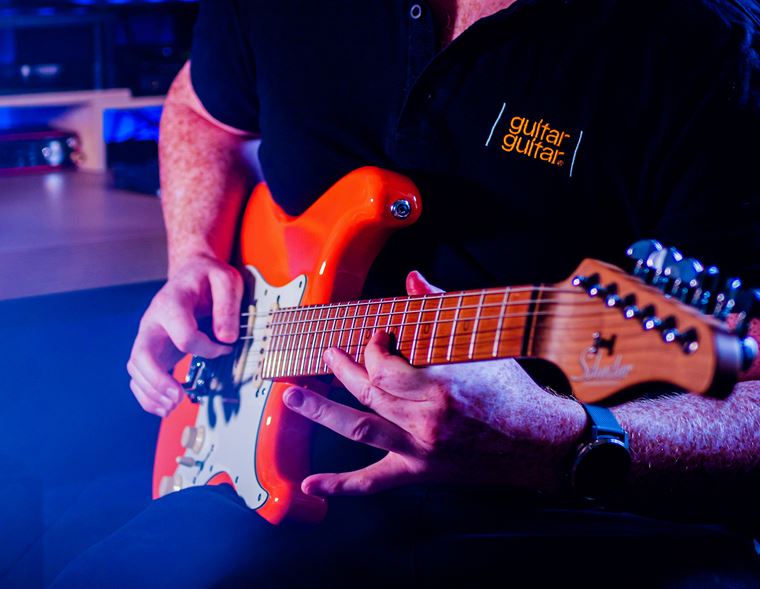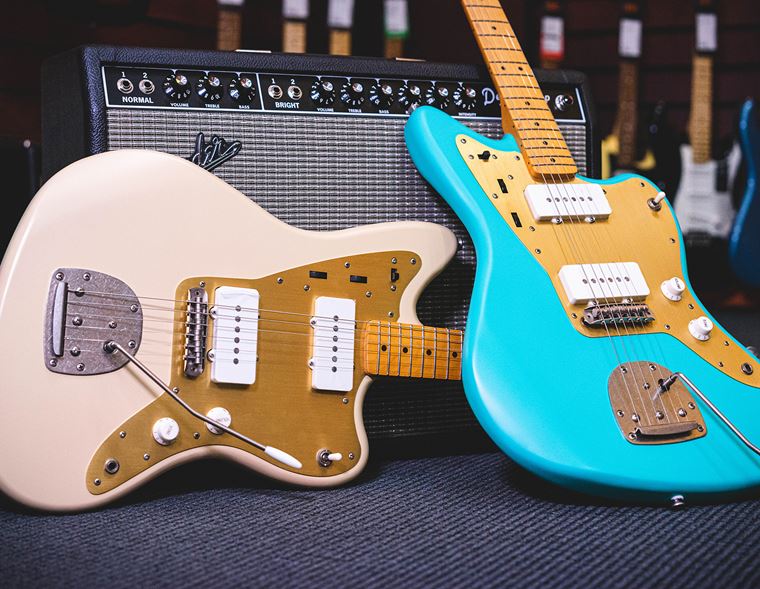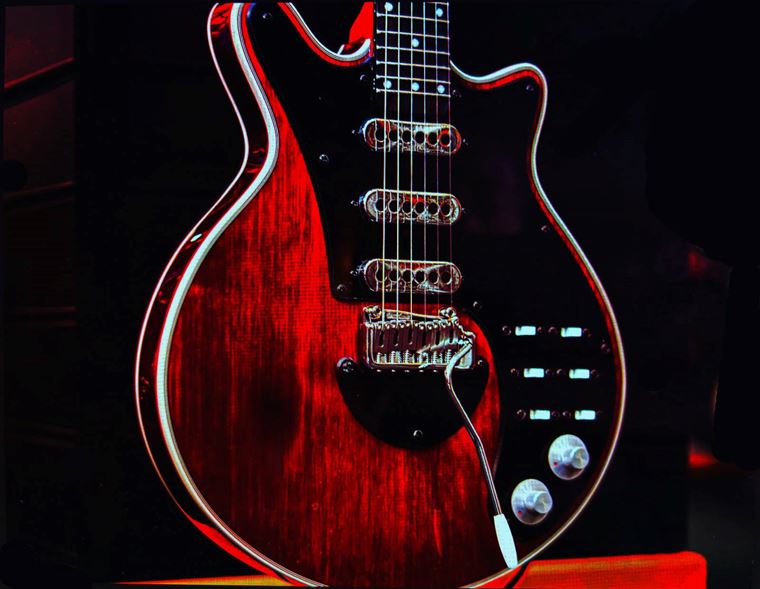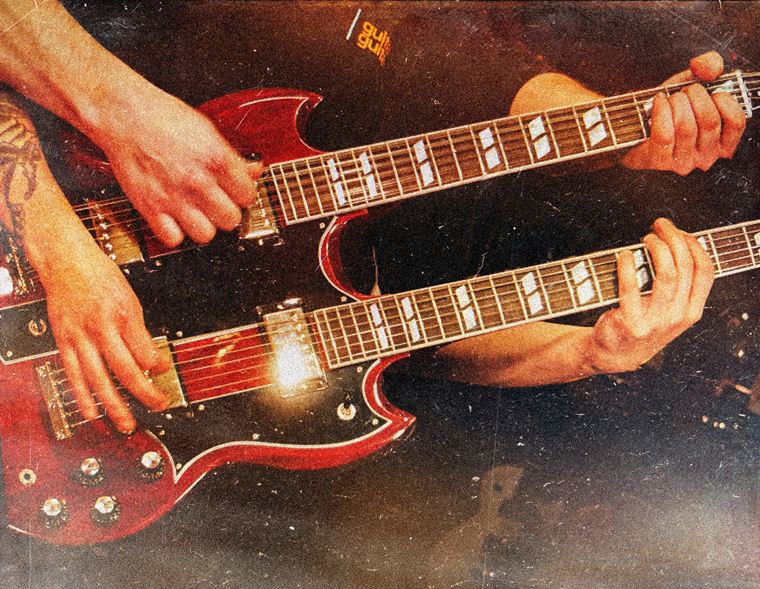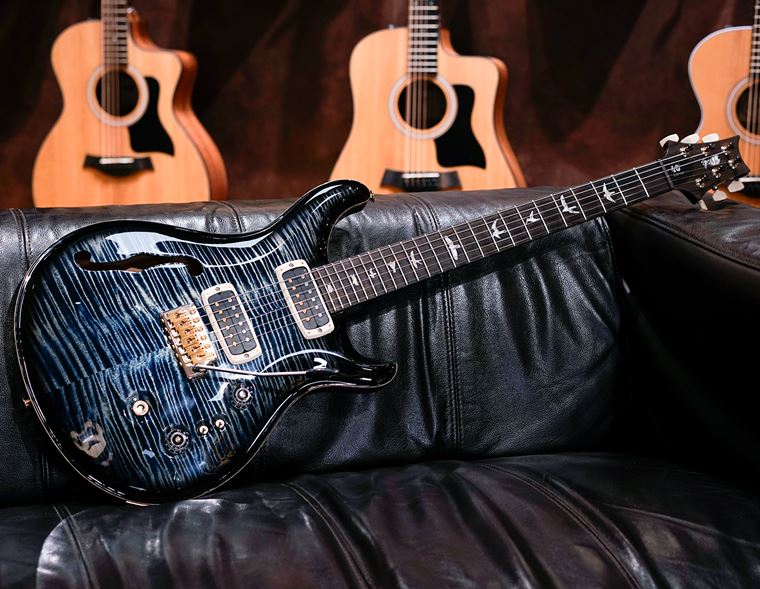The Greatness of Gilmour: 5 Greatest David Gilmour Guitar Moments
Published on 17 February 2021
Pink Floyd’s David Gilmour is undoubtedly one of the world’s favourite electric guitar players. Across the planet, people who like and identify with all kinds of different music styles all seem to agree that Pink Floyd are ace, and they all love Gilmour’s lyrical, melodic playing.
He’s one of those players who seems to just pick the right notes all the time. You can hum his solos, and they are integral parts of each song, regardless of how ‘extended’ some of them become. Achieving this is no mean feat! Gilmour’s ear for melodic nuance and dramatic phrasing are second to none, and his touch is unparalleled.
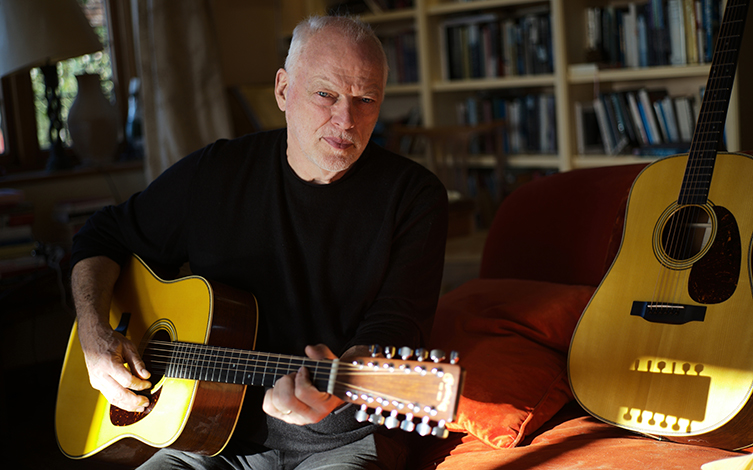
(Photo: Polly Samson)
The 5 Moments that Made David Gilmour
Today’s blog aims to shine a little (crazy? sorry...) light on 5 examples of David’s superb guitar playing, in order to illustrate just how incredible, influential and downright special an artist he is. Pink Floyd have tons of cool bits to choose from, but this is about Gilmour and his contribution to the language of the guitar, so we’re all about his glorious solos today. At the end, we’ll include a very brief guide to his equipment and how you can add some ‘Gilmour’ into your own sound.
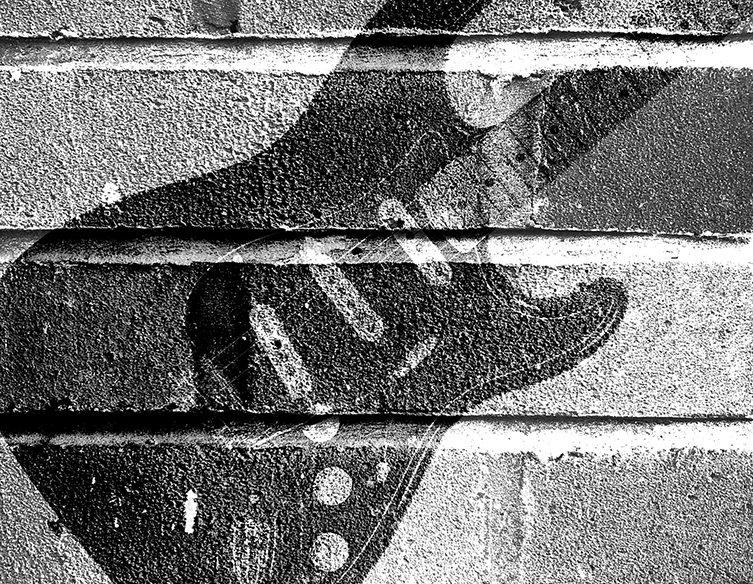
Comfortably Numb
Where else to begin but with his most glorious and heroic playing? Comfortably Numb is a highlight of Floyd’s paranoid magnum opus The Wall, and its two solos are almost a blueprint for how to make an impact on a song with a guitar.
The first solo plays over the major key chorus chords, and have a plaintive, yearning sound that sums up the frustration and heartbreak of the album’s protagonist. It’s stunningly beautiful, easy on the ears and carries a melancholy within it, even as it soars like a bird at the beach.
The second solo is played over the minor key verse chords and really changes the direction of the song. It’s dark, twisted and full of drama. Even if you just learned this solo alone, it is full of hugely worthwhile ‘moments’ that can spice up your own playing!
Shine On You Crazy Diamond
If there’s a more epic and languorously mysterious way to begin a song (and indeed, album), then we’ve never heard it. So much of the grandeur and ‘otherness’ of Pink Floyd’s music can be effectively summed up in Shine On You Crazy Diamond’s intro, from the ominous drones to Rick Wright’s impressionistic Moog solo. We are already evoking huge, dark, monolithic pyramids in our mind’s eye before Gilmour’s guitar announces itself, sending us up into the stratosphere to float above the earth.
It’s a star turn of a guitar part, and part of what makes it so show stopping is how simple it is. This intro solo is proof that you really can’t beat a great player with a gorgeous, direct tone, who knows exactly what they want to do and how to do it. It’s like listening to a speech by someone who really knows how to talk.
After the intro solo - and we’re talking about nearly four minutes into the song now - there is a very distinctive four note riff played on the guitar. This is known as the ‘Syd’ riff, since it seemed to evoke in the members of Pink Floyd a sad, difficult-to-describe feeling that reminded them all of their elliptical ex-band member Syd Barrett. This ghostly, Phase 90 effected sound inspired lyricist Roger Waters to pen the song around Barrett’s tragic genius. The song’s context adds heaps of emotional depth, but that resonance is already there and obvious to the listener, whether they know the subject matter or not. It’s powerful and moving stuff.
Wish You Were Here
Though obviously a master of the Stratocaster, David Gilmour’s famous playing on Wish You Were Here’s title track proves he’s just as recognisable on an acoustic guitar. There’s actually something of a sneaky trick involved in the song’s mix at the beginning, too: what sounds like a portable radio is playing at the start, with someone dialling in a channel to find a song beginning. Then, a much clearer, closer acoustic guitar starts playing along to the song, with beautifully phrased slides and double stops showing class and taste to spare. The radio frequency changes, and the main vocal enters, proving that there was no radio show at all, and that Gilmour was playing along with his own rhythm part all along! Pretty cool.
Time
Is this Gilmour’s greatest ever guitar solo? It may well be, since it seems to have it all: it’s concise and yet languid; dramatic yet relaxed; easy to remember yet has some deceptively tricky parts to learn. Time is one of Dark Side of the Moon’s most significant songs, and the guitar solo seems to know this and react accordingly. One of Gilmour’s signature moves as a player is evident here too, in a full tone bend which he holds and then raises by a further half-step before releasing. This is one of those tricks that is brilliant if you get the bends pitched correctly (work up to it of you lack the finger strength), and a wonky mess if you don’t! Dave doesn’t let us down.
It’s a solo of two distinct sections, though they appear as one piece of music. The first part climaxes with some heavy-duty, high register bends, before the second part has Gilmour selecting some beautiful – and entirely unpredictable – slides and melodic measures over the chorus’ maj7th chords, which transports the song into another dimension entirely. You know the part: it’s when the dreamy backing vocals come back in!
This solo is Gilmour at the top of his game as both a player and a composer. It’s a masterpiece on its own, regardless of the great song it’s a part of.
High Hopes
Our final choice to illustrate the greatness of Gilmour adds yet another string to his considerable bow. This time, its lap steel playing, and our example is the climactic solo at the end of High Hopes, from 1994’s Division Bell album.
Really, this is classic Gilmour through and through. He never forgets the importance of melody, filling his solo with hummable hooks that are dipped in that special ‘sad triumph’ that marks the best of Pink Floyd’s output, and brings the pitch of his notes increasingly higher to pack on the drama as the piece progresses. It’s a phenomenal example of how to take lap steel guitar firmly away from ‘roots’ music and blast it into outer space. We won’t discourage from giving this a go on a standard electric guitar, but we’re talking equivalent pitches of notes that would be around the 30th and 31st frets, so the margin for error is tiny! Good luck if you attempt it!
Sounding like Dave, Playing Like Dave
So, you’ve now heard ample proof to support our claim that David Gilmour is one of the greatest guitarists ever. You already knew this, of course, but indulge us! You’re now so convinced about this that you want some of that Gilmour magical dust to sprinkle on your own guitar playing.
Understandable. But nobody is going to sound like him any more than they will sound like SRV/Hendrix/Clapton/Page/Vai/Van Halen etc etc. Let’s face up to that, accept it, and get past it. Now, what can you use to sound more like David Gilmour and what can you do with your playing to inject a little bit of the Floyd sound?
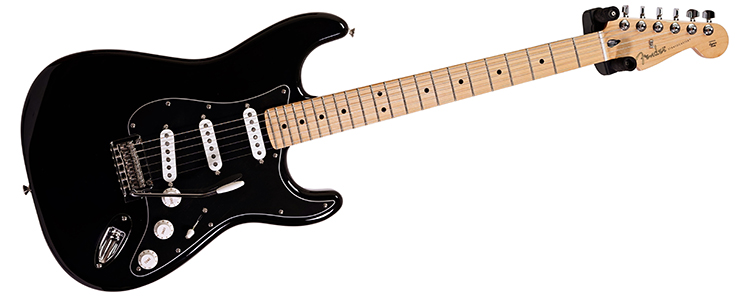
So, gear first. You don’t necessarily need a Custom Shop Fender David Gilmour Signature Strat, but a Stratocaster of some description will certainly help, be it Fender or otherwise. The colour will not matter a jot, nor will changing the pickguard, okay? Right. Next, you could do worse than to look into Lace Sensor pickups (80s and 90s Gilmour) or some Seymour Duncan single coils (the Black Strat, sort of) but in truth, any nice Strat pickups will be perfect. Yes, the ones already in your guitar will do fine!
For strings, Dave goes for a gauge that’s 10-48, which is relatively unorthodox since the B and G strings are a little bit lighter than usual 10 gauge, and the bottom E is a little heavier. For picks, it’s a silver Herco .75mm and if you discount this factor, you are missing a relatively crucial part of the puzzle. Try one out and you’ll no doubt see what we mean: they feel specifically different to nearly all plectrums out there. If you don’t like them, you don’t like them, but it would be remiss to ignore that small piece of equipment.
Amp-wise, you want volume and clean headroom. He often uses a Hiwatt head, but just get a sound that’s clean, has plenty of midrange (listen out for the mids and you’ll definitely hear them: he’s not a twangy player) and bottom end. Volume will be determined by your family/neighbours, but are we talking about Rock n Roll or what?
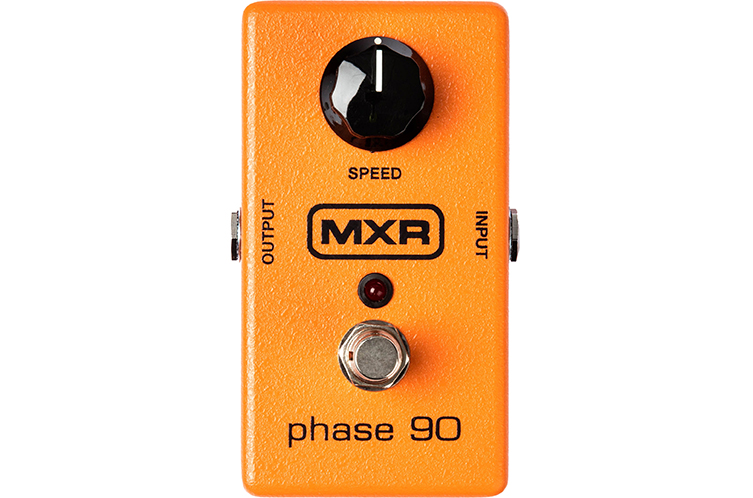
Pedal wise, an MXR Phase 90 is exactly what to use to get that Shine On sound, and a Big Muff is Dave’s fuzz of choice for songs like Time. Otherwise, just keep a good quality overdrive nearby and some nice ambient effects. It really is all in the fingers, but these gear choices will at least have you in the correct ballpark.
Now, a word or two on technique. Bends are obviously a major part of his style, and he’s well known for bending 3 semitones (and more!), which takes a little doing! Accuracy is key here, so practice hitting the target pitches and definitely support your ring finger with your first and index fingers as you bend! As we said earlier, getting this technique wrong seriously undermines your playing, so don’t unleash it on the public until you’ve mastered it!
Gilmour’s melodic note choice is often related to minor Pentatonic and the Major and Natural Minor scales, but he very occasionally makes use of the modes, too. It’s subtle, but he certainly knows how to play melodically outside the standard ‘boxes’. Talking of boxes, Gilmour very often uses multiple positions of a scale, too: every solo we’ve looked at today has shown him playing up and down the neck, as well as across it. This is something that many guitar players tend to neglect, choosing instead to just learn those box scale patterns in one place. To soar like Gilmour, you need to give yourself more space and more options!
Finally, one tip is for his use of vibrato. Whether using the tremolo bar (which he does do a lot) or using finger vibrato, Gilmour cleverly uses a technique he took from opera singers, believe it or not! His trick is to hold the note for a couple of seconds without using any vibrato at all, and then introduce it afterwards. It’s a subtle thing, but once you know it, you’ll really notice it!
David Gilmour: The People’s Champion
There aren’t many music fans, and guitar fans, who don’t appreciate David Gilmour’s titanic contribution to modern guitar music. Why, though? What’s the secret to his appeal? What have we learned from studying his best works?
Well, that’s not the kind of question that can ever elicit a definitive response, but one word does come through to us, and that word is accessibility. Gilmour’s playing, even when he’s flat-out going for it, is never dazzlingly fast or off puttingly showy. It’s really accessible, to those who love big guitar solos and to those who love no guitar solos. There’s always a sense that his playing is contributing to the accumulative effect of the song, rather than it be a case of waiting for a window to showcase techniques and ego. This accessibility is probably why he’s more world-famous than other equally great prog guitarists (how often we forget that Pink Floyd are as prog as it gets) and even other Blues players who tend to see songs as excuses for solos. Gilmour seems to never think along those terms, and that in turn seems to put his playing into a much more effective context for listeners.
Who knows, though? That’s just our opinion. He’s a wonderful musician and we’re glad to have his music. We hope you’ve enjoyed going through these hand-picked Floyd moments with us, and we sincerely hope it has encouraged you to pick up your guitar and shine like the crazy diamond you most surely are.
Ray McClelland

